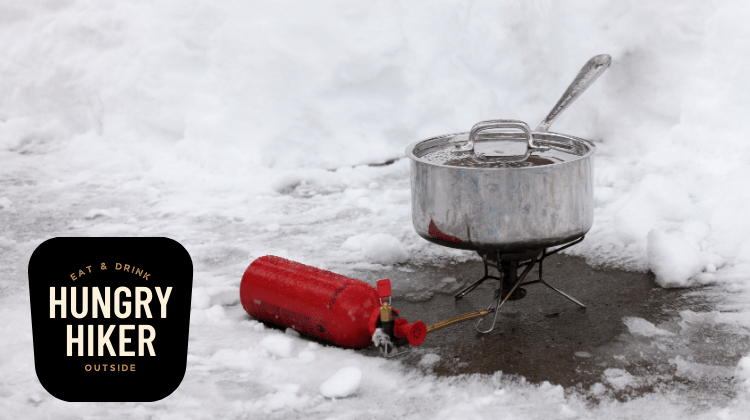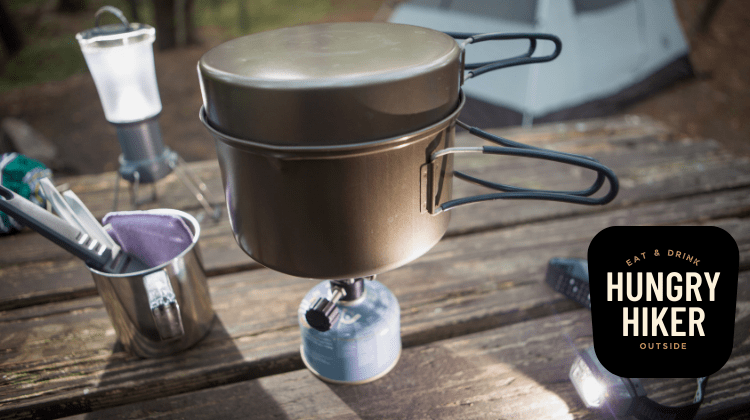
If you’re unfamiliar with backpacking stoves, they’re small heating elements that make it easy to cook meals during your time outdoors. This is especially useful if you have a long hike ahead of you and need something to eat but don’t want to carry around heavy food items or plan on cooking over an open flame. Backpacking stoves are usually portable devices that can be powered by either liquid fuel or butane/propane canisters. They come in different shapes and sizes, so it’s important for hikers to consider their individual needs before purchasing one.
A backpacking stove is a portable device that enables you to cook your meals while on the trail.
A backpacking stove is made up of three parts: an outer shell, fuel storage and burners. The outer shell helps protect these other two components from damage during transport or use; it also serves as an insulator so that heat generated by the flame does not escape too quickly. Fuel storage holds the fuel needed to power your burner(s), which are located inside of this section as well (more on that later).
There are two main types of backpacking stove: liquid fuel and canister-based.
Liquid fuel stoves require more effort to set up and take down, but they offer greater power and control over the flame. They’re also better for cold weather since it’s easier to light them in freezing temperatures. In contrast, canister stoves are easier to use but don’t work as well in cold temperatures or high elevations (where there isn’t enough oxygen). Canister-based stoves have improved substantially over the past decade; however, some people still prefer liquid fuels because they tend not to clog like white gas does when exposed to moisture at high altitudes where humidity is low (like on Mt Everest).
Liquid fuel stoves generally comprise a burner, pot stand and fuel canister.

The fuel canister is a metal container that holds the fuel. The burner is the part of the backpacking stove that produces heat and is usually adjustable to allow you to control how much flame you want. Finally, pot stands help hold your pot above an open flame so it doesn’t burn as easily or get scorched by direct contact with fire
Canister stoves use pre-filled propane or butane canisters attached directly to the heating element.

Canister stoves are convenient, easy to use and lightweight, making them ideal for backpacking trips. Canisters can be found at most outdoor stores and places like Walmart and are usually more expensive than liquid fuel stoves.
Some backpackers choose to bring along both styles of stove, since each has its pros and cons.
A liquid fuel stove is a lot more powerful than a canister stove and can be used in cold temperatures or high elevations. Also, liquid-fuel stoves will often accept more than one type of fuel. However, it’s harder to ignite and dial-in the temperature and must be filled with fuel before each use. Plus, liquid fuel is heavier than canister fuel.
A canister stove is lighter and easier to use but doesn’t work as well in cold temperatures or high elevations. Some backpackers choose to bring along both types of stoves, since each has its pros and cons:
For example, liquid fuel stoves require more effort to set up and take down, but they have more power capabilities for cooking dinners and large meals. Meanwhile, a canister-fuel backpacking stove will heat up faster and easier, ideal for the chilly-morning cup of coffee.
What is the difference between a backpacking stove and camping stove?
You might be wondering what the difference between a backpacking stove and a camping stove is. Well, for one thing, they have different purposes. Backpacking stoves are designed to be lightweight, compact and easy to use while on the move–ideal for hikers who want to keep their packs light as they trek through nature. They’re also generally less powerful than other models of camping stoves since they don’t need to burn large amounts of fuel or food at once (like when you’re cooking for 50 people).
Meanwhile electric stoves provide convenience but not much else in terms of cooking performance or efficiency because they require electricity from an outlet, solar panel or battery pack to work properly — and batteries can get expensive!
Backpacking stoves are great because they make it easy for you to cook your meals whenever you want them!
When you’re backpacking, a lot of the time it’s not going to be easy or convenient for you to cook your own food. You may be spending several days in a row without any source of electricity or running water. That’s why having a backpacking stove is so important!
You can use these stoves for anything from boiling water for hot drinks and soups all the way up through making full-fledged meals like pasta and rice dishes — the possibilities are endless!
Conclusion
If you’re looking to explore the great outdoors on your own two feet, then a backpacking stove is an essential tool. These devices allow you to cook your meals wherever and whenever you want them, which makes them perfect for long treks through remote areas where no other food options are available.
Hungry Hiker Recap: What is a Backpacking Stove?
- A backpacking stove is a portable heating device that enables you to cook your meals while on the trail, river or any wilderness setting.
- There are two main types of backpacking stove: liquid fuel and canister-based.
- Liquid fuel stoves are more powerful and require more effort to set up and take down than canister stoves do.
- Canister-based stoves are easier to use, but they don’t work as well in cold temperatures or high elevations.
- You should try both types and maybe even invest in one of each for the best combination of easy use and reliability in all conditions.

